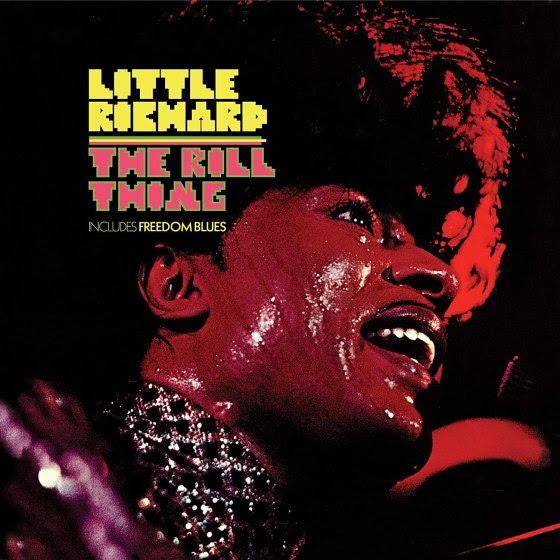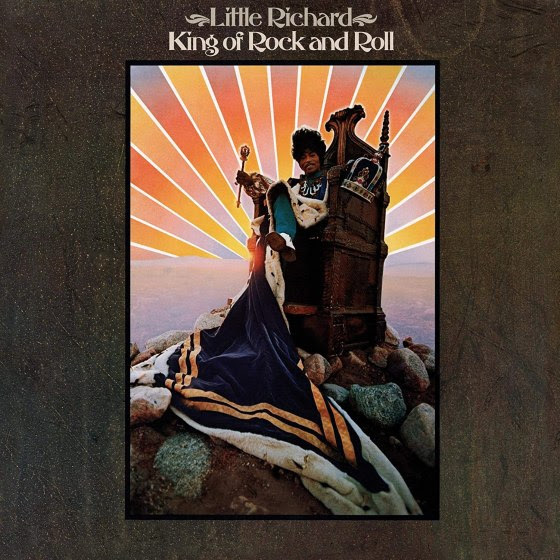 If you buy only one album by Little Richard, who died in May at age 87, it should be the three-disc Specialty Sessions. That terrific 1990 anthology is where you’ll find the original versions of all of his Bumps Blackwell–produced blockbuster hits from the late 1950s as well as everything else he released during his heyday.
If you buy only one album by Little Richard, who died in May at age 87, it should be the three-disc Specialty Sessions. That terrific 1990 anthology is where you’ll find the original versions of all of his Bumps Blackwell–produced blockbuster hits from the late 1950s as well as everything else he released during his heyday.
Should you want to explore further, though, you have several options. The latest of these include a pair of 1970 and 1971 albums that are being reissued on Sept. 18 on CD—not for the first time but with remastered sound, bonus tracks and new liner notes. Though not on a par with his best work, these records leave no doubt that Richard’s flamboyant personality and high energy level remained intact more than a decade after his years in the limelight.
The 1970 release, the self-produced The Rill Thing, finds the singer recording in Muscle Shoals, Alabama, with a talented band that prominently features sax. The program—which includes five numbers written or cowritten by Richard—largely eschews the rock ’n’ roll and crazed R&B that characterize his groundbreaking Specialty material in favor of a funky Southern soul sound. But he does include a rocking cover of the Beatles’ “I Saw Her Standing There.” (The Fab Four, of course, were huge fans who recorded Richard numbers like “Long Tall Sally” and “Lucille” early in their career.)
Listen to Little Richard cover a band that was influenced by him
Other selections include “Freedom Blues,” which opens with an acapella part and enjoyed some success as a single; “Greenwood, Mississippi,” which sounds redolent of Creedence Clearwater Revival; and the more than 10-minute title cut, an instrumental jam with Richard on piano.
Listen to “Freedom Blues”
Among the bonus tracks are “Shake a Hand (If You Can),” a reading of the 1953 Faye Adams hit that Richard previously recorded in 1959; the single edit of “I Saw Her Standing There”; and a couple of personality-drenched radio spots in which he touts the album.
 The Rill Thing has its moments and should be of interest to serious fans, but it’s not difficult to see why it failed to produce the desired major comeback for Richard: the material and instrumentation simply don’t show off his strengths as well as the Specialty material did.
The Rill Thing has its moments and should be of interest to serious fans, but it’s not difficult to see why it failed to produce the desired major comeback for Richard: the material and instrumentation simply don’t show off his strengths as well as the Specialty material did.
You could say the same about 1971’s King of Rock and Roll, which was produced by H.B Barnum (Frank Sinatra, the Supremes, etc.). Like The Rill Thing, this CD features strong vocal work but rarely shows Richard in the best light. It opens with the self-congratulatory title cut, which is as convincing as it is immodest: Richard sounds as fired up as he was when he made his early classics. But the album is marred by distractions that include spoken bits, simulated crowd noises and a surfeit of backup singers. And while Richard’s 1950s work presented him as a trailblazer, the preponderance of covers of other artists’ hits on King of Rock and Roll suggests that he has become more of a follower.
Related: Which of the first-generation rockers are still with us?
The program includes more direct nods to Creedence Clearwater than The Rill Thing does: it features that group’s “Born on the Bayou” as well as the traditional “Midnight Special,” which Creedence also covered.
And, while The Rill Thing incorporates one song associated with Hank Williams (“Lovesick Blues”), the expanded version of King of Rock and Roll makes room for three: “Settin’ the Woods on Fire,” “I’m So Lonesome I Could Cry” and “Why Don’t You Love Me.” (Richard was a big Williams fan.) Also here are covers of such contemporaneous hits as Three Dog Night’s “Joy to the World,” the Rolling Stones’ “Brown Sugar” and Martha and the Vandellas’ “Dancing in the Street.” It’s all good fun but, unlike The Specialty Sessions, not the sort of electrifying effort you’d be inclined to urge everyone you know to sample.
Listen to “Somebody Saw You” from The Rill Thing
[easy_sign_up title=”Sign up for the Best Classic Bands Newsletter”]

